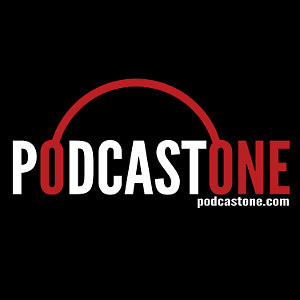
With podcasting a new frontier for radio, new ways to monetize the fledgling medium have emerged that go well beyond direct response ads read by hosts. Ad insertion has entered the ring, along with native advertising.
Targeting podcast ads based on behavioral data and demographics is becoming more prevalent. Using third party providers, CBS Radio, PodcastOne, audioBoom and other podcast players dynamically insert ads. CBS Radio stitches them into Play.it podcasts, whether the listener is streaming on demand or downloading the audio to their device. Here’s how it works: When there’s a call to the server for a specific podcast, it instantaneously sees what ads are available for that podcast or the demographic behavior purchased by the marketer. It then inserts the ads into the file before it’s downloaded or streamed.
“We made the audio on demand business very marketer-friendly,” says CBS Local Digital Media president Ezra Kucharz.
Data plays an increasingly important role. “There’s plenty of data, both digitally and through surveys, that can provide all the needed info to brand advertisers on who the audience is and their purchasing makeup,” PodcastOne founder Norm Pattiz says.
Native advertising is becoming part of the playbook, too. At its SoundFront presentation, iHeartMedia’s pitch to marketers included inviting them to participate in the creative process for a new slate of podcasts. “We have some ideas, and we want to do it with your brands,” CMO Gayle Troberman said.
Client-branded podcasts are a big push at CBS, too, which is working with several brand advertisers to launch podcasts of their own original content toward the end of second quarter.
When PodcastOne launched two year ago, 90% of its business was direct response ads. Audience deliveries were small. But engaged, loyal followings produced strong results and high CPMs. “The podcast audience is worth more for an advertiser because they had to perform a positive act to access the content,” Pattiz says. The company’s national brand advertisers have surged from six to 46 during the past two years and it expects to end 2015 with a 50-50 ratio of direct response to brand advertisers.
“National brands are starting to use the medium in much more effective ways,” Pattiz says. The company expects to bill $20 million this year, ten times what it booked when it launched two years ago.
But despite the runaway success of NPR’s “Serial,” which amassed 80 million downloads, podcasting gets only a sliver of ad dollars. There is no precise tracking of its annual revenue with estimates ranging from as low as $34 million to as high as $60 million with potential to reach $100 million in the near-term.
Podcasting’s ace in the hole is a loyal and engaged audience – users seek out and subscribe to specific shows on topics that interest them. Being able to demonstrate a deeper emotional attachment could lead to higher CPMs than your average music stream. “We’re in the early stage and everyone’s trying to assess value,” Kucharz says. “A lot of brands like to associate themselves with passion plays and that’s what this is about.”
One-third of the country’s 12+ population has listened to a podcast, some 89 million people, according to Edison Research and Triton Digital. While the trend is one of solid growth, measuring how many people listened to a specific podcast after downloading it is one hurdle the industry will need to overcome to give marketers the metrics they’re accustomed to.
Companies like RawVoice, Libsyn and Podtrac measure the number of podcast downloads but they aren’t able to convert them into audience impressions. PodcastOne uses Edison to survey its audience and then fuses that demographic and psychographic data with the raw downloads to convert them into impressions. It also tags spots to validate the number of impressions the commercial received at the time it was consumed or downloaded.
The way Americans listen to podcasts is changing. There’s more consumption through on demand streaming than downloads, digital executives say. PodcastOne says 60% of its listeners stream its podcasts. As usage continues to shift away from downloads to streaming, podcast measurement is expected to improve.
But even without precise measurement, the trend line is clear. PodcastOne programs are downloaded 140 million time a month and generate 100 million monthly impressions, according to the company. Listening to Play.it has increased more than 30% since it launched.
Kucharz sees nothing but blue sky ahead for the medium, thanks to consumers already trained to use services like Netflix and Hulu to access on demand video and platforms like Spotify and Rdio to access music on demand. “You’re training consumers to access content when they want it,” he says. “Now it’s spoken word’s turn.”